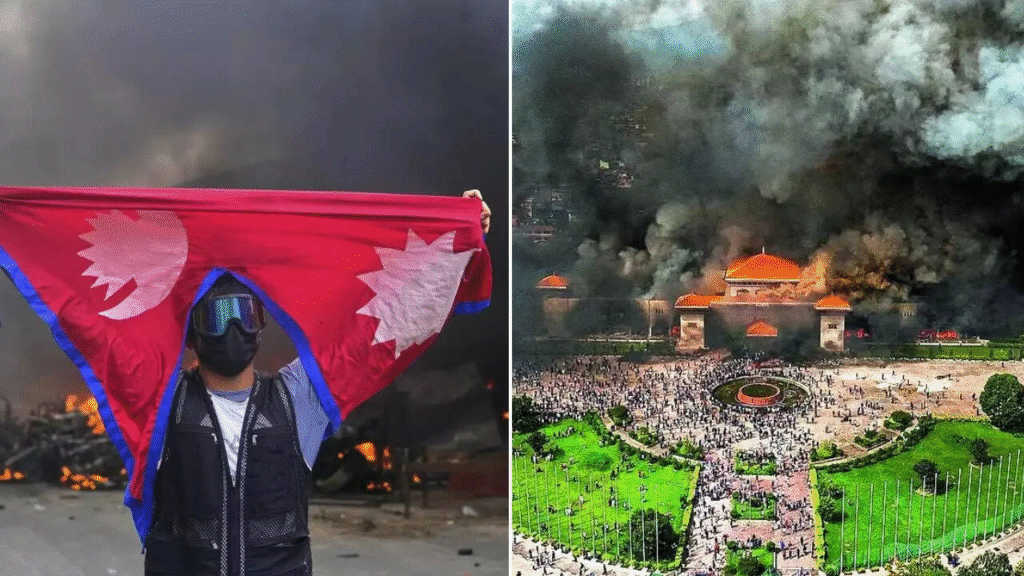Nepal is facing its most intense political crisis in decades after Prime Minister K.P. Sharma Oli resigned on September 9, 2025, following mass anti-corruption protests driven largely by the country’s youth. The demonstrations erupted over a controversial social media ban and accusations of systemic corruption, prompting deadly clashes with security forces that left more than 22 people dead. In response to the escalating turmoil, Nepal’s army has moved into the streets to restore order and protect critical infrastructure.
The unrest, characterized by the vocal “Gen Z” movement, saw protesters defy curfews, storm, and set fire to the parliament building and government offices in Kathmandu. The residences of several political leaders, including Oli’s private home, were also attacked. Demonstrators expressed frustration with longstanding political dysfunction, corruption, and lack of economic opportunities plaguing the Himalayan nation.

In an official letter, Oli stated that he resigned “in view of the adverse situation in the country” to facilitate a political solution under Nepal’s constitution. His departure leaves Nepal’s fragile parliamentary system in flux, with efforts underway by President Ramchandra Paudel to appoint a new prime minister and hold dialogue with protest leaders. The army chief, General Ashok Raj Sigdel, urged all parties to avoid violence and support peace, emphasizing the military’s role in safeguarding citizens and property during this crisis.
The United States has called for restraint and reaffirmed its commitment to Nepal’s stability and governance. As celebrations erupted among protesters following Oli’s resignation, security forces maintained a cautious posture, aiming to prevent further violence.
Nepal’s political instability has been persistent since the monarchy was abolished in 2008. Oli, 73, had taken office for the fourth time last year, becoming Nepal’s 14th prime minister since that historic change. His resignation is expected to trigger complex political negotiations among major parties including the Nepali Congress, CPN-UML, and Maoist Centre, all vying for leadership amidst widespread public demand for reform and accountability.
The immediate next steps involve calming tensions, ensuring security, and navigating the political deadlock. The army’s involvement marks a critical juncture, balancing stabilisation with respect for democratic processes. How Nepal transitions from this crisis will shape its trajectory for years to come, as protest demands intertwine with political power struggles in a deeply divided nation.

Regional Stability in South Asia
Nepal is strategically located between India and China, two major global powers. Political instability could impact bilateral relations, trade routes, and security dynamics in the region. Neighboring countries will closely monitor Nepal’s transition to ensure it does not create a wider security or refugee crisis, especially given the porous borders and ethnic ties across boundaries.
Impact on India-Nepal Relations
India has historically maintained strong ties with Nepal and views it as a critical neighbor. Prolonged instability may affect ongoing infrastructure projects, cross-border economic activities, and cooperative counterterrorism efforts. India’s role in supporting democratic processes in Nepal will attract diplomatic attention amid the army’s growing involvement.
China’s Strategic Interests
China’s Belt and Road Initiative (BRI) has major projects running through Nepal, including road connectivity and hydropower. Political upheaval may delay or complicate these investments, affecting China’s geopolitical influence expansion in South Asia. Beijing will likely seek to engage Nepal’s new leadership to safeguard its investments and maintain stability.
Global Economic and Security Considerations
While Nepal’s direct economic footprint is modest, prolonged instability could hinder its development goals, affecting sectors like tourism and trade. This may reduce regional economic growth and investment interest. Additionally, political chaos in Nepal could attract transnational security risks including trafficking and radicalization, which global security agencies monitor.
Human Rights and Democracy
International observers and human rights groups are attentive to Nepal’s military involvement and protester suppression. The global community’s response, including from the United Nations and Western democracies, will influence future aid, diplomatic ties, and Nepal’s international image as a democratic state.
In summary, while Nepal’s unrest is a localized crisis, the ripple effects on regional security, international diplomacy, and economic plans can be significant, making the country’s stabilization a priority for global and regional stakeholders alike







